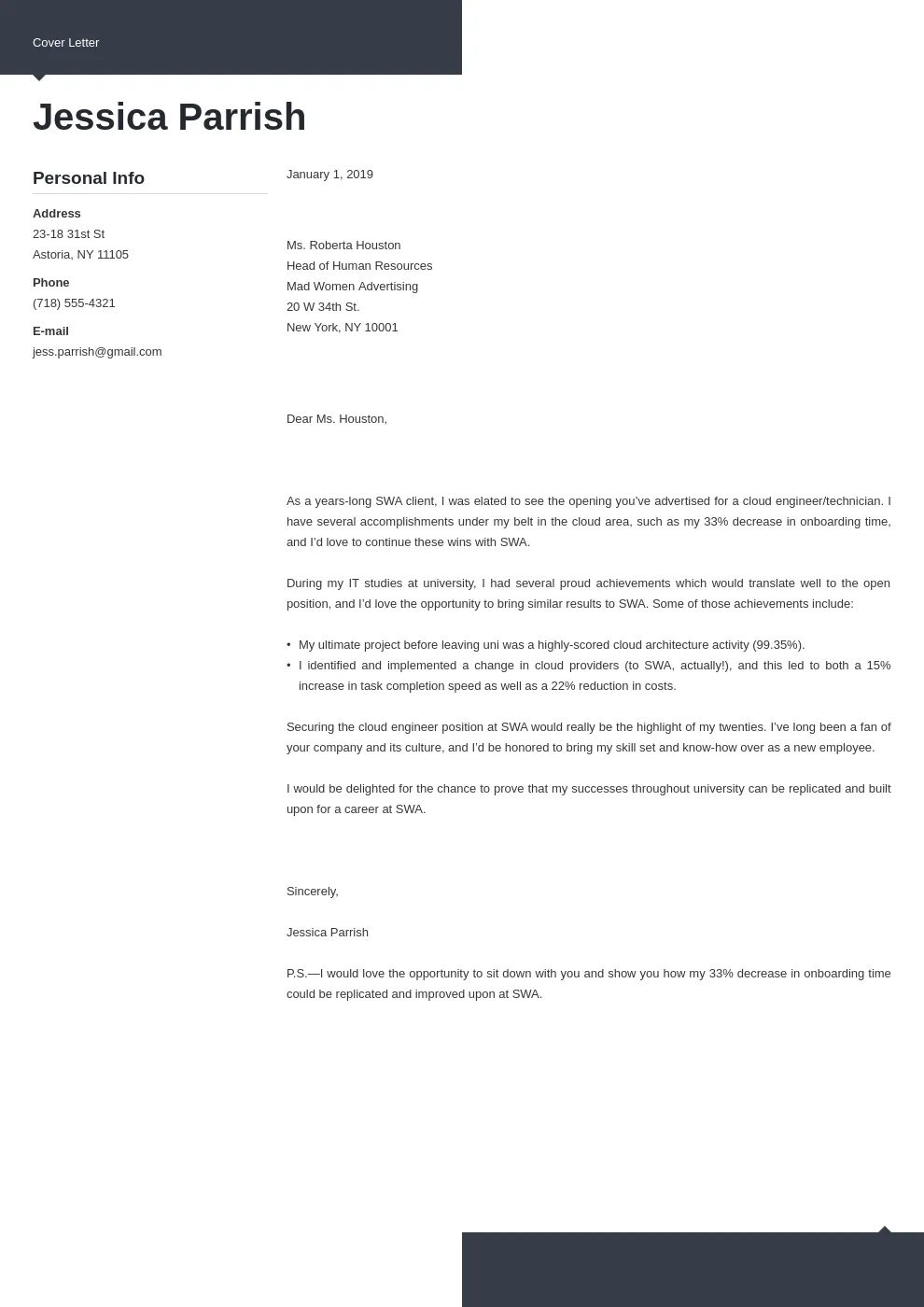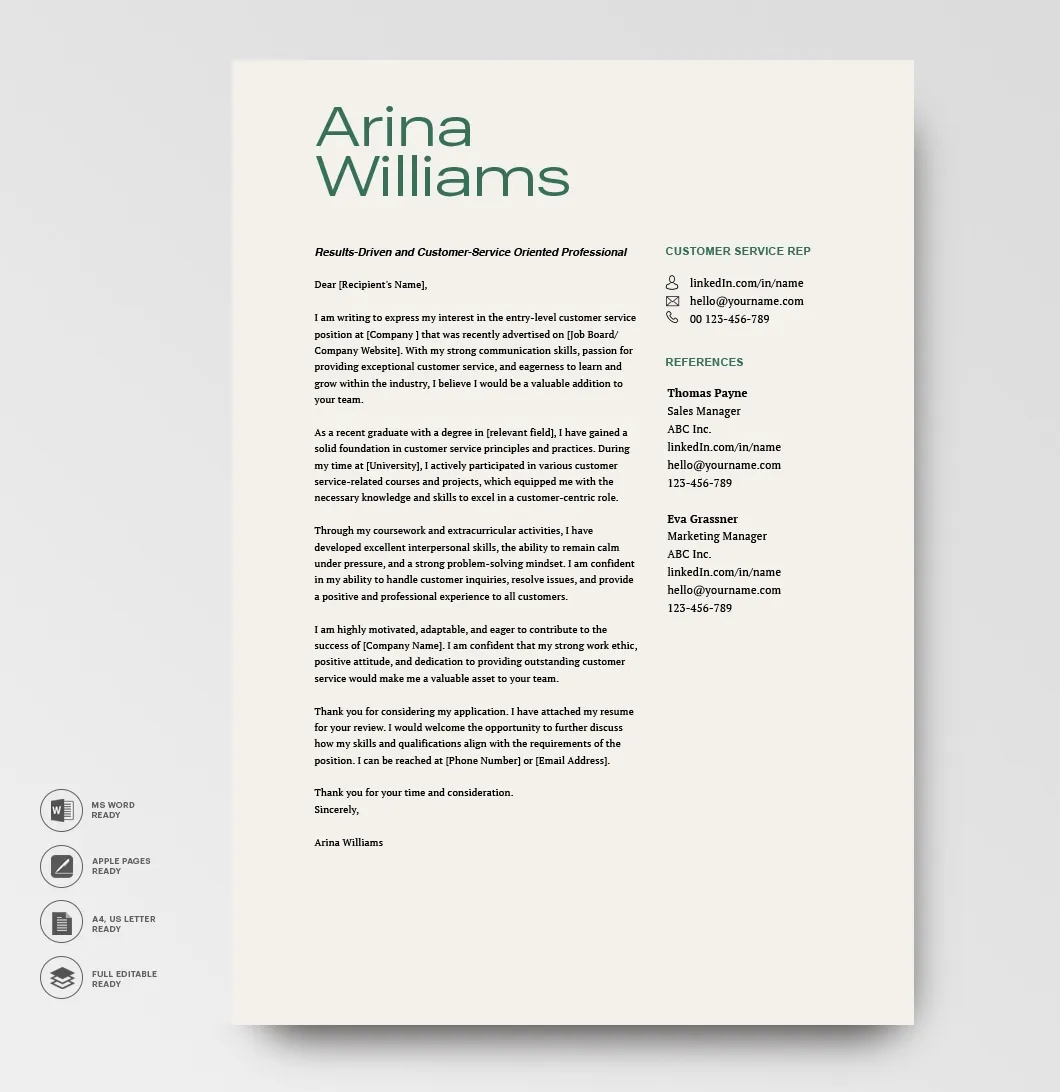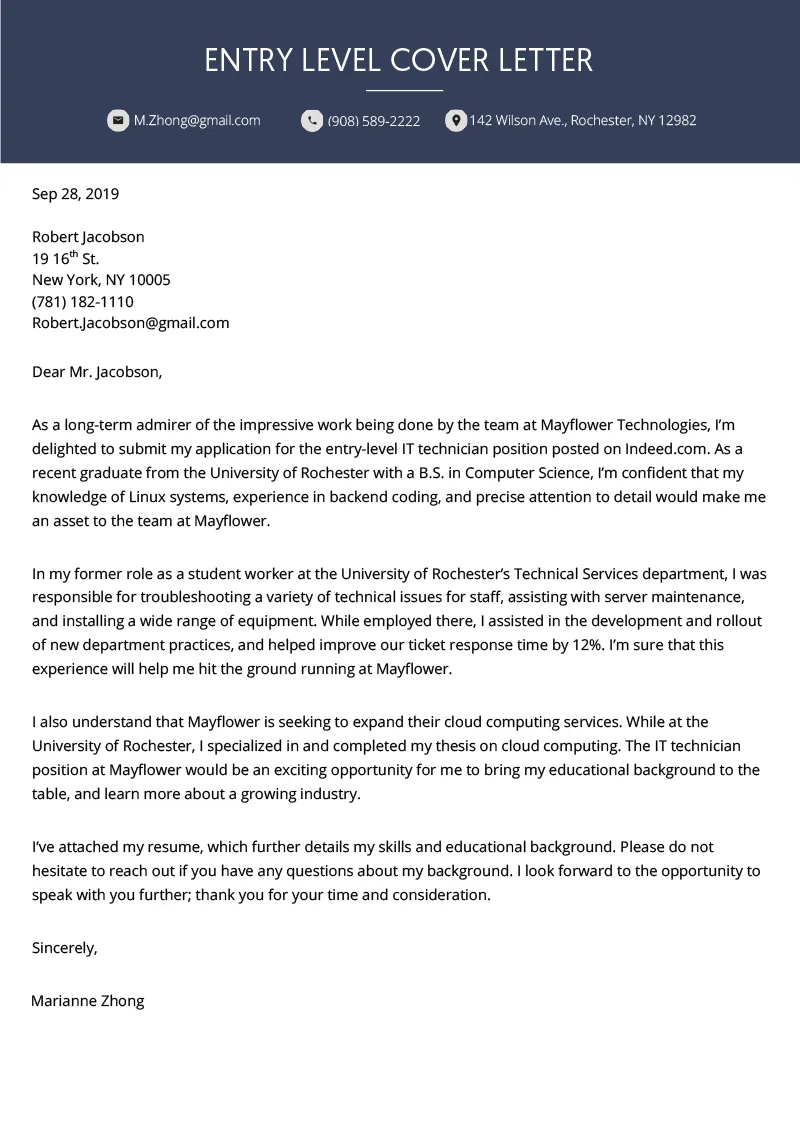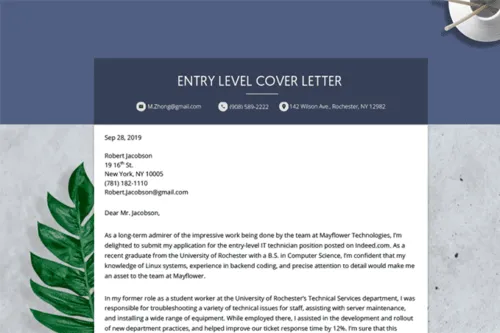Understanding the Entry-Level Cover Letter
An entry-level cover letter is your first chance to impress a potential employer and showcase your suitability for a role. Unlike more experienced professionals who can lean on a lengthy work history, entry-level candidates must use the cover letter to highlight their potential, enthusiasm, and the transferable skills they possess. It’s not just about listing your qualifications; it’s about telling a compelling story that convinces the hiring manager you’re the right fit, even without direct experience. This letter is your introduction; make it count. Remember, your resume gives the details, the cover letter provides the narrative and context. Crafting a strong cover letter is crucial for landing interviews and ultimately, your first job. Consider it an essential part of your job application toolkit.
Why a Cover Letter Matters for Entry-Level Jobs
In a competitive job market, a cover letter offers an advantage. For entry-level positions, where many applicants may have similar qualifications (e.g., recent graduates), a well-written cover letter helps you stand out. It lets you personalize your application, demonstrating that you understand the company and the specific role. It is also an opportunity to address any gaps in your resume, such as a lack of direct experience. Furthermore, a cover letter showcases your communication skills, an essential quality for almost any job. It demonstrates your professionalism, attention to detail, and genuine interest in the position. Without a cover letter, your application may seem impersonal, and you might miss the chance to make a memorable first impression. A cover letter is often the first impression, so make it a good one.
Key Components of a Winning Entry-Level Cover Letter

A strong entry-level cover letter includes several key components working together to create a winning impression. The structure should be professional and easy to follow. The letter should open with a clear header containing your contact information, followed by a formal greeting. Next comes a compelling opening paragraph that immediately captures the reader’s attention by stating the position you are applying for and expressing your enthusiasm. The body paragraphs should then highlight your value proposition and relevant skills and experiences. Use specific examples and quantify your achievements whenever possible. The closing paragraph should reiterate your interest and include a clear call to action, such as requesting an interview. Finally, the letter must conclude with a professional closing and signature. Each component must be polished.
Header and Contact Information
Your header should clearly display your name, address, phone number, and professional email address. Make sure your email address sounds professional. If you have a LinkedIn profile, include the URL as well. This information ensures the hiring manager can easily reach you. The header should be formatted consistently with your resume to reinforce your professional brand. Ensure your contact information is up-to-date and accurate to avoid any communication issues. Using a simple, clean design for your header makes it easy for the reader to identify your essential details at a glance. Double-check all details before sending your cover letter. Accuracy is key when providing your essential contact information.
Greeting Your Prospective Employer
Address the hiring manager by name whenever possible. Research the company website or LinkedIn to find the appropriate contact person. A personalized greeting demonstrates that you’ve taken the time to research and are genuinely interested in the opportunity. If you can’t find a specific name, a professional greeting such as “Dear Hiring Manager” is acceptable. Avoid generic greetings like “To Whom It May Concern” as they lack personalization. Always use a formal and respectful tone, matching the overall professional tone of the letter. The greeting sets the tone for the rest of your letter. It is also a great way to demonstrate attention to detail, a great skill for those seeking entry level positions.
The Opening Paragraph Crafting

The opening paragraph is your hook. It should immediately state the position you’re applying for and express your enthusiasm for the opportunity. Briefly mention where you found the job posting and highlight any key skills or experiences that align with the job requirements. This paragraph should be concise, typically three to four sentences. The goal is to grab the reader’s attention and make them want to learn more. You should also mention what makes you interested in the specific company and the role. Avoid generic opening statements and focus on demonstrating your understanding of the company and the position. Your opening paragraph can make the difference between getting a read or getting tossed.
Highlighting Your Value Proposition
This section focuses on explaining what you bring to the table. Entry-level candidates should emphasize transferable skills, such as communication, teamwork, problem-solving, and time management. Provide specific examples from your academic projects, internships, volunteer work, or extracurricular activities that demonstrate these skills. Quantify your achievements whenever possible. For instance, instead of saying “Improved customer service,” say “Improved customer service scores by 15%.” Tailor your value proposition to match the specific requirements of the job description. Show how your skills and experiences align with what the employer is looking for. It will allow you to prove why you are valuable, even at the entry level.
Showcasing Relevant Skills and Experience
Even if you lack direct work experience, you can still highlight relevant skills and experiences. Focus on transferable skills gained through education, internships, volunteer work, or other activities. These can include communication, teamwork, leadership, problem-solving, and technical skills. Describe specific projects or situations where you utilized these skills and achieved positive outcomes. Use action verbs to describe your accomplishments (e.g., “Managed,” “Led,” “Collaborated”). Tailor this section to match the job description, emphasizing the skills and experiences most relevant to the position. This is your chance to prove you have what it takes to succeed. Think of it as proving that you are a match, even if on paper it doesn’t look like you are.
Addressing the Job Requirements

Carefully review the job description and identify the key requirements. Address these requirements directly in your cover letter. Explain how your skills and experiences align with each of the requirements. Use specific examples to illustrate your abilities. If there are any gaps in your resume, such as a lack of direct experience in a specific area, address them proactively. Explain how you plan to overcome these gaps and contribute to the company’s success. This could involve highlighting your willingness to learn, your proactive approach to skill development, or your ability to adapt to new challenges. Show the employer you have what it takes to fill this role. Address each requirement as a way of confirming you can fulfil the role.
Quantifying Achievements
Whenever possible, quantify your achievements to make them more impactful. Use numbers, percentages, and specific data to demonstrate the results of your actions. For example, instead of saying “Improved efficiency,” say “Increased efficiency by 20%.” Instead of “Managed social media,” say “Managed social media accounts, resulting in a 15% increase in follower engagement.” Quantifiable achievements make your accomplishments more concrete and measurable, making your value more apparent to the hiring manager. This helps your application stand out. Provide clear evidence of your successes, illustrating how you have made a difference in previous roles or projects. Numbers tell your story.
Closing and Call to Action
Your closing paragraph should reiterate your interest in the position and thank the hiring manager for their time and consideration. Include a clear call to action, such as requesting an interview. Make it easy for the employer to take the next step. Reiterate your enthusiasm and your interest in the position. Express your confidence in your ability to contribute to the company’s success. A strong call to action might be “I am eager to discuss how my skills and enthusiasm can benefit your team. I am available for an interview at your earliest convenience.” This creates a sense of urgency and proactive initiative. Closing with a call to action shows confidence.
Proper Formatting and Proofreading

Pay close attention to the formatting of your cover letter. Use a professional font, such as Times New Roman, Arial, or Calibri, and maintain consistent formatting throughout. Keep the letter concise, typically no more than one page. Ensure your margins are consistent and that the text is easy to read. Proofread your cover letter carefully for any grammatical errors, spelling mistakes, or typos. Have a friend or family member review it as well. A polished and error-free cover letter demonstrates your attention to detail and professionalism. Check your document multiple times and use grammar checking software. A poorly formatted or error-filled cover letter can undermine your chances, no matter how strong your content is. Always be mindful of what this cover letter can do for your application.
